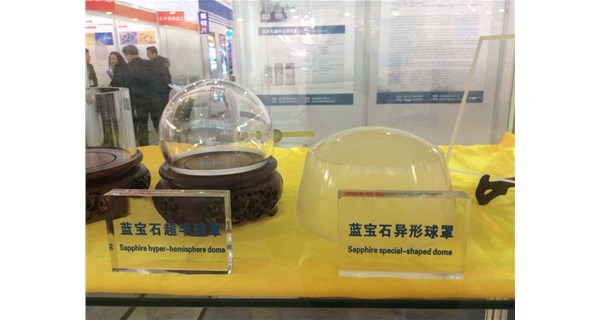Sapphire crystal rod is aluminum oxide crystal, used to produce sapphire substrate
The application of sapphire crystal rod is the application of sapphire. As long as we know its performance, we can know what aspects it is used in.
Sapphire has a hexagonal lattice structure, and many properties are determined by its crystal orientation. Through epitaxial crystal membrane growth, different crystal orientation will present different lattice matching to the target material.
Sapphire has certain birefringence characteristics, and special crystal axes are used in some optical fields, such as polarized substrates:
C-section sapphire substrates are used to grow III-V and II-VI deposited films, such as gallium nitride, which can yield blue LED products, laser diodes, and infrared detector applications.
Type A substrates produce uniform permittivity/media and are highly insulated for use in hybrid microelectronics. High temperature superconductors can be produced from A-base elongated crystals.
- Different deposited extrasystallines grown on R-type substrates are used in microelectronics integrated circuits. Because of its high permittivity, sapphire is the best choice for hybrid substrates, such as in microwave integrated circuits. In addition, high-speed integrated circuits and pressure sensors can also be formed in the process of film production of epitaxial silicon growth. R-type substrate can also be used in the production of lead, other superconducting components, high resistance resistors, gallium arsenide.
- Type M, A and R can grow non-polar or semi-polar gallium nitride. Sapphire as a commercial product still needs a lot of research to improve the material quality of gallium nitride epitaxy. Purity: -- Sapphire is an insulating material whose semiconductor properties are changed by doping substances and impurities.
Therefore, most of the purity control is not due to strict control of its base materials (silicon, gallium arsenide, indium phosphide...). Instead, some trace doping substances change their optical properties (color, light conduction range), which is crucial for some applications (optics, military). Because the purity of sapphire has a strong effect on electrical properties and metal surface cross-contamination when applied to CMOS (complementary metal oxide semiconductors), it is also critical in SoS (silicon on sapphire large-scale integrated circuits) applications. It has not been proved that sapphire purity has an impact on the application of LED, SoS manufacturers attribute its characteristics to sapphire substrate. Guide mold method (edge film feeding method) : Heat/melt →→→→ Add seed/pull →→→→ Cut --2 m long 100 mm wide ribbon or 9 x 26, 12 x 20 feet of giant sapphire plates -- tubular sapphires more than 65 feet long, or other shapes -- sapphire crystals are stretched through different substrates (A, R, C, other) into different crystalline arrangements. Mainly used in industrial and mechanical manufacturing - in inert gases (nitrogen, argon) the growth rate of 1 to 5 cm/h - different crystals can start to grow at the same time (sometimes more than 20 kinds)


 +86 138 2924 6405
+86 138 2924 6405



